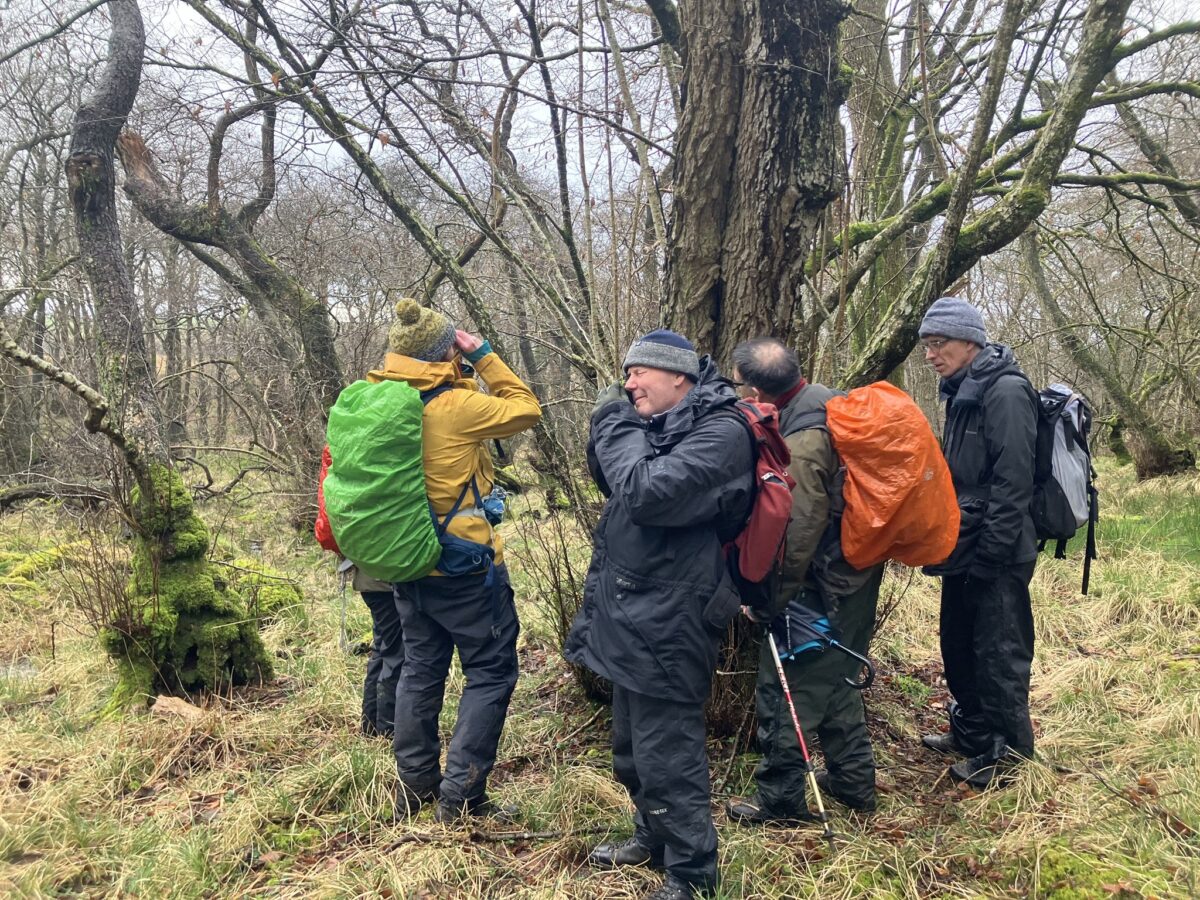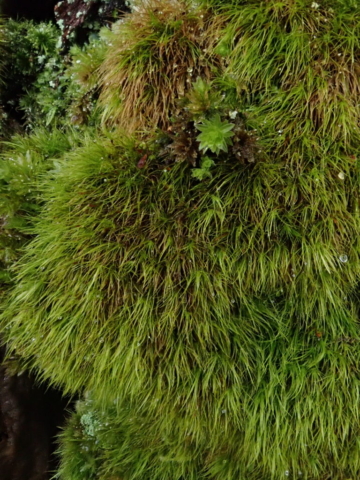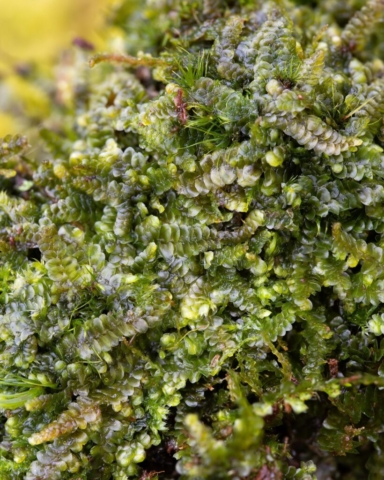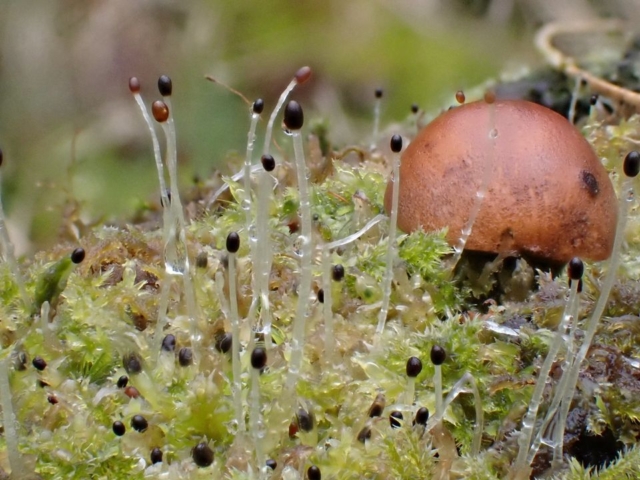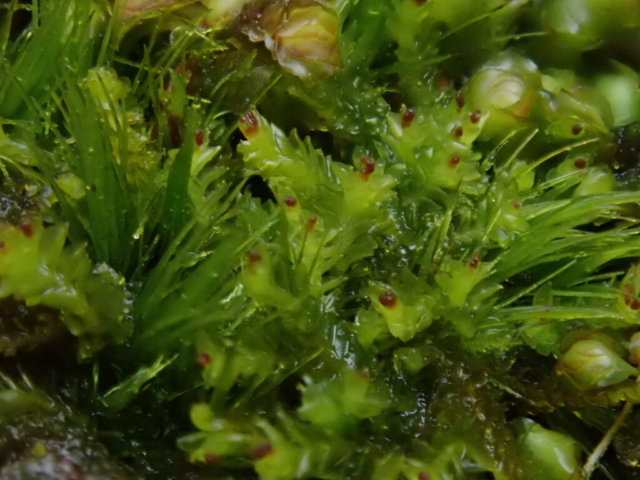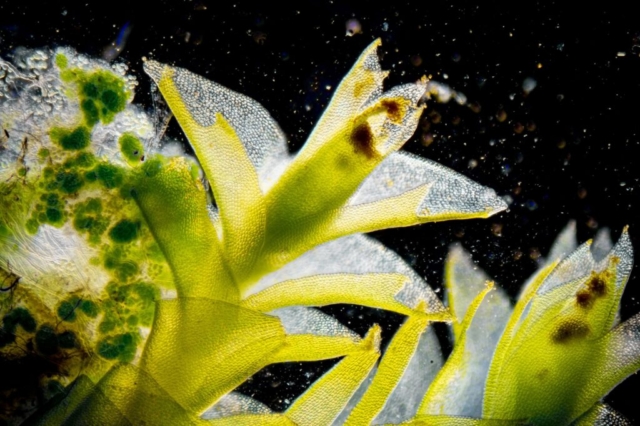Despite the forecast of heavy rain all day, a respectable group gathered in Brampton to share cars to Askerton Castle. Mollen Wood Site of Special Scientific Interest (SSSI) is part of the Askerton Castle Organic Estate which lies 3km north of Hadrian’s Wall and about 15k south of the Scottish Border. The estate’s owners had kindly granted access to the wood and permission to park at the farm, a kilometre to the south. At 30ha the SSSI is quite small, but is still one of the largest areas of wet Alder woodland remaining in East Cumbria. Overlying Carboniferous shales, it has a range of soil types from acidic to moderately base rich. There are surprisingly few existing records of lichens or bryophytes from the site, which was one of the motivations for the visit.
After a brisk walk along the road, the bryophyte contingent left the lichen party and plunged into the largest section of the SSSI (Mollen Wood sensu stricto). The lower part was very wet indeed and dominated almost exclusively by Alder with old multi-stemmed trees and plenty of dead wood. A range of common mosses including Thuidium tamariscinum, Isothecium myosuroides. I alopecuroides, Mnium hornum, Calliergonella cuspidata and Polytrichum formosum were quickly found. Closer inspection of the deadwood produced the liverworts Lepidozia reptans and Riccardia palmata, and the diminutive moss Tetraphis pellucida with its distinctive gemmae cups. The numerous small watercourses flowing down into this area proved interesting with the mosses Ctenidium molluscum, Rhizomnium punctatum, Sciurophypnum plumosum and Platyhypnidium riparoides, and the liverworts Plagiochila porelloides and Scapania undulata all recorded here. Patches of the rather liverwort-like moss Hookeria lucens, with its huge cells easily visible under a x10 handlens, was present, and a single small patch of the attractive liverwort Trichocolea tomentella (Handsome Woollywort) was also found.
As we moved up-slope there was a gradual transition to drier, more acidic soils with a different suite of bryophytes present including Rhytidiadelphus loreus, Scapania gracilis, Loeskeobryum brevirostre, Dicranum majus and Hylocomium splendens. Dicranodontium denutatum was frequent on dead wood, often with the liverwort Barbilophozia attenuata growing through it. Perhaps the two star finds of the day were Tritomaria exscecta and T exsectiformis growing quite close together. These tiny very similar liverworts live amongst other bryophytes and are usually only found due to the red gemmae present on the leaf tips. Examination under the microscope is needed to see rounded gemmae of T exsecta and the angular gemmae of T exsectiformis.
Despite the wetness of the site, it was late afternoon before we encountered any sphagna. A large patch of Sphagnum palustre with some S inundatum were found in a spring as we left the site. Ditches in the adjacent pasture also provided a diversion on the way back to the road with Palustriella commutata, P falcata and Philonotis fontana amongst other things.
In the end the rain mostly missed this remote corner of Cumbria and the group had a very interesting and enjoyable day. A total of 74 species were recorded for monad NY5670.
Report by Kerry Milligan
Photos: Paul Ross (PR), Belinda Lloyd (BL), Ian Burrow (IB) and Kerry Milligan (KM)
